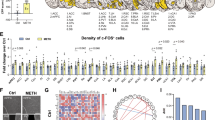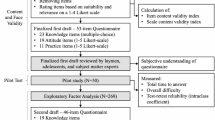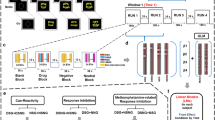Abstract
Individuals with cognitive problems may be predisposed to develop substance use disorders; therefore, differences in cognitive function between methamphetamine users and control participants may be attributable to premorbid factors rather than methamphetamine use. The goal of this study was to clarify the extent to which this is the case. Childhood academic transcripts were obtained for 37 methamphetamine-dependent adults and 41 control participants of similar educational level and premorbid IQ. Each participant completed a comprehensive cognitive battery and received a structural magnetic resonance imaging scan. Data from control participants and linear regression were used to develop a normative model to describe the relationship between childhood academic performance and scores on the cognitive battery. Using this model, cognitive performance of methamphetamine users was predicted from their premorbid academic scores. Results indicated that methamphetamine users’ childhood grade point average was significantly lower than that of the control group (p < 0.05). Further, methamphetamine users’ overall cognitive performance was lower than was predicted from their grade point average prior to methamphetamine use (p = 0.001), with specific deficits in attention/concentration and memory (ps < 0.01). Memory deficits were associated with lower whole-brain cortical thickness (p < 0.05). Thus, in addition to having an apparent premorbid weakness in cognition, methamphetamine users exhibit subsequent cognitive function that is significantly lower than premorbid estimates would predict. The results support the view that chronic methamphetamine use causes a decline in cognition and/or a failure to develop normative cognitive abilities, although aside from methamphetamine use per se, other drug use and unidentified factors likely contribute to the observed effects.
Similar content being viewed by others
Log in or create a free account to read this content
Gain free access to this article, as well as selected content from this journal and more on nature.com
or
References
Fernandez-Serrano MJ, Perez-Garcia M, Verdejo-Garcia A. What are the specific vs. generalized effects of drugs of abuse on neuropsychological performance? Neurosci Biobehav Rev. 2011;35:377–406.
Scott JC, Woods SP, Matt GE, Meyer RA, Heaton RK, Atkinson JH et al. Neurocognitive effects of methamphetamine: a critical review and meta-analysis. Neuropsychol Rev. 2007;17:275–97.
Tarter RE, Kirisci L, Habeych M, Reynolds M, Vanyukov M. Neurobehavior disinhibition in childhood predisposes boys to substance use disorder by young adulthood: direct and mediated etiologic pathways. Drug Alcohol Depend. 2004;73:121–32.
Tarter RE, Kirisci L, Mezzich A, Cornelius JR, Pajer K, Vanyukov M et al. Neurobehavioral disinhibition in childhood predicts early age at onset of substance use disorder. Am J Psychiatry. 2003;160:1078–85.
Koenen KC, Moffitt TE, Roberts AL, Martin LT, Kubzansky L, Harrington H et al. Childhood IQ and adult mental disorders: a test of the cognitive reserve hypothesis. Am J Psychiatry. 2009;166:50–7.
Ersche KD, Jones PS, Williams GB, Turton AJ, Robbins TW, Bullmore ET. Abnormal brain structure implicated in stimulant drug addiction. Science. 2012a;335:601–4.
Ersche KD, Turton AJ, Chamberlain SR, Muller U, Bullmore ET, Robbins TW. Cognitive dysfunction and anxious-impulsive personality traits are endophenotypes for drug dependence. Am J Psychiatry. 2012b;169:926–36.
Toomey R, Lyons MJ, Eisen SA, Xian H, Chantarujikapong S, Seidman LJ et al. A twin study of the neuropsychological consequences of stimulant abuse. Arch Gen Psychiatry. 2003;60:303–10.
Baade LE, Schoenberg MR. A proposed method to estimate premorbid intelligence utilizing group achievement measures from school records. Arch Clin Neuropsychol. 2004;19:227–43.
Deary I, Strand S, Smith P, Fernades C. Intelligence and educational achievement. Intelligence. 2007;35:13–21.
Heaton RK, Pendleton MG. Use of Neuropsychological tests to predict adult patients’ everyday functioning. J Consult Clin Psychol. 1981;49:807–21.
Greiffenstein MF, Baker WJ. Premorbid clues? Preinjury scholastic performance and present neuropsychological functioning in late postconcussion syndrome. Clin Neuropsychol. 2003;17:561–73.
Sternberg RJ, Grigorenko EL, Bundy DA. The predictive value of IQ. Merrill Palmer Q. 2001;47:1–41.
Bilder RM, Reiter G, Bates J, Lencz T, Szeszko P, Goldman RS et al. Cognitive development in schizophrenia: follow-back from the first episode. J Clin Exp Neuropsychol. 2006;28:270–82.
Lyoo IK, Yoon S, Kim TS, Lim SM, Choi Y, Kim JE et al. Predisposition to and effects of methamphetamine use on the adolescent brain. Mol Psychiatry. 2015;20:1516–24.
Mesulam, M (2000). Behavioral neuroanatomy: large-scalenetworks, association cortex, frontal syndromes, the limbic system, and hemispheric specializations. In Principles of behavioral and cognitive neurology (ed.M Mesulam), pp. 1–120. Oxford University Press: Oxford.
Okita, K, Morales, AM, Dean, AC, Johnson, MC, Lu, V, Farahi, J, Mandelkern, MA & London, ED (2017). Striatal dopamine D1-type receptor availability: no difference from control but association with cortical thickness in methamphetamine users. Mol Psychiatry.
First MB, Spitzer RL, Gibbon M, Williams JBW. The structured clinical interview for DSM-IV axis I disorders (SCID-IP). Washington, D.C: American Psychiatric Press; 1995.
U.S. Department of Education, I. o. E. S. (2009). The 2009 High School Transcript Study. National Center for Education Statistics.
Slick D, Hopp G, Strauss E, Thompson G. The victoria symptom validity test. Odessa, FL: Psychological Assessment Resources; 1997.
Babikian T, Boone KB, Lu P, Arnold G. Sensitivity and specificity of various digit span scores in the detection of suspect effort. Clin Neuropsychol. 2006;20:145–59.
Iverson GL, Lange RT, Green P, Franzen MD. Detecting exaggeration and malingering with the trail making test. Clin Neuropsychol. 2002;16:398–406.
Reitan RM. Validity of the trail making test as an indicator of organic brain damage. Percept Mot Skills. 1958;8:271–6.
Golden CJ. Stroop color and word test: a manual for clinical and experimental uses. Wood Dale, IL: Stoelting Company; 1978.
Wechsler, D (1997). Wechsler Adult Intelligence Scale Third Edition. The Psychological Corporation: San Antonio,TX.
Robertson CL, Ishibashi K, Mandelkern MA, Brown AK, Ghahremani DG, Sabb F et al. Striatal D1- and D2-type dopamine receptors are linked to motor response inhibition in human subjects. J Neurosci. 2015;35:5990–7.
Bilder RM, Sabb FW, Cannon TD, London ED, Jentsch JD, Parker DS et al. Phenomics: the systematic study of phenotypes on a genome-wide scale. Neuroscience. 2009;164:30–42.
Heaton RK. Wisconsin card sorting test manual. Odessa, FL: Psychological Assessment Resources; 1981.
Schretlen DJ. Brief test of attention professional manual. Odessa, FL: Psychological Assessment Resources, Inc; 1997.
Glahn DC, Therman S, Manninen M, Huttunen M, Kaprio J, Lonnqvist J et al. Spatial working memory as an endophenotype for schizophrenia. Biol Psychiatry. 2003;53:624–6.
Buschke H. Retention in immediate memory estimated without retrieval. Science. 1963;140:56–57.
Rey A. L’examen clinique en psychologie [Clinical tests in psychology]. Paris: Presses Universitaires de France; 1964.
Benedict RH. Brief visuospatial memory test-revised. Odessa, FL: Psychological Assessment Resources; 1997.
Delis DC, Kaplan E, Kramer JH. Delis-Kaplan executive function system (DKEFS): examiner’s manual. San Antonio, TX: The Psychological Corporation; 2001.
Fan J, McCandliss BD, Fossella J, Flombaum JI, Posner MI. The activation of attentional networks. Neuroimage. 2005;26:471–9.
Logan GD, Cowan WB, Davis KA. On the ability to inhibit simple and choice reaction time responses: a model and a method. J Exp Psychol Hum Percept Perform. 1984;10:276–91.
Dean AC, Kohno M, Morales AM, Ghahremani DG, London ED. Denial in methamphetamine users: associations with cognition and functional connectivity in brain. Drug Alcohol Depend. 2015;151:84–91.
Simon SL, Dean AC, Cordova X, Monterosso JR, London ED. Methamphetamine dependence and neuropsychological functioning: evaluating change during early abstinence. J Stud Alcohol Drugs. 2010;71:335–44.
Dean AC, Hellemann G, Sugar CA, London ED. Educational attainment is not a good proxy for cognitive function in methamphetamine dependence. Drug Alcohol Depend. 2012;123:249–54.
Mitrushina, M, Boone, KB, Razani, J & D’Elia, LF. eds. (2005). Handbook of normative data for neuropsychological assessment. Oxford University Press: Oxford.
McGregor C, Srisurapanont M, Mitchell A, Longo MC, Cahill S, White JM. Psychometric evaluation of the amphetamine cessation symptom assessment. J Subst Abus Treat. 2008;34:443–9.
Segonne F, Dale AM, Busa E, Glessner M, Salat D, Hahn HK et al. A hybrid approach to the skull stripping problem in MRI. Neuroimage. 2004;22:1060–75.
Pluddemann A, Flisher AJ, McKetin R, Parry CD, Lombard CJ. A prospective study of methamphetamine use as a predictor of high school non-attendance in Cape Town, South Africa. Subst Abus Treat Prev Policy. 2010;5:25.
Wechsler D. Wechsler test of adult reading. San Antonio, TX: Psychological Corporation; 2001.
Hedges LV, Laine RD, Greenwald R. Does money matter? A meta-analysis of studies of the effects of differential school inputs on student outcomes. Educ Res. 1994;23:5–14.
Sayegh P, Arentoft A, Thaler NS, Dean AC, Thames AD. Quality of education predicts performance on the wide range achievement test-4th edition word reading subtest. Arch Clin Neuropsychol. 2014;29:731–6.
Jernigan TL, Gamst AC, Archibald SL, Fennema-Notestine C, Mindt MR, Marcotte TD et al. Effects of methamphetamine dependence and HIV infection on cerebral morphology. Am J Psychiatry. 2005;162:1461–72.
Kim SJ, Lyoo IK, Hwang J, Chung A, Hoon SY, Kim J et al. Prefrontal grey-matter changes in short-term and long-term abstinent methamphetamine abusers. Int J Neuropsychopharmacol. 2006;9:221–8.
Morales AM, Lee B, Hellemann G, O’Neill J, London ED. Gray-matter volume in methamphetamine dependence: cigarette smoking and changes with abstinence from methamphetamine. Drug Alcohol Depend. 2012;125:230–8.
Nakama H, Chang L, Fein G, Shimotsu R, Jiang CS, Ernst T. Methamphetamine users show greater than normal age-related cortical gray matter loss. Addiction. 2011;106:1474–83.
Schwartz DL, Mitchell AD, Lahna DL, Luber HS, Huckans MS, Mitchell SH et al. Global and local morphometric differences in recently abstinent methamphetamine-dependent individuals. Neuroimage. 2010;50:1392–401.
Thompson PM, Hayashi K, Simon SL, Geaga JA, Hong MS, Sui Y et al. Structural abnormalities in the brains of human subjects who use methamphetamine. J Neurosci. 2004;24:6028–36.
Dean AC, Groman SM, Morales AM, London ED. An evaluation of the evidence that methamphetamine abuse causes cognitive decline in humans. Neuropsychopharmacology. 2013;38:259–74.
Cohen J. Statistical power analysis for the behavioral sciences. Hillsdale, NJ: Lawrence Erlbaum Associates; 1988.
Acknowledgements
We gratefully acknowledge the efforts of several graduate students and researchers who worked with study participants or research data, with whom this work would not have been possible: Ahoo Karimian, Psy.D; Alexandria Davis, MPA; Brittany Reid, Psy.D; Dara Ghahremani, Ph.D.; Edmon Artinyan, M.A.; Eric Wagreich; M.D.; Eugene Oh; Hannah Jones, Ph.D; Kimberly Lin; Kimberly Price; Kristina Mouzakis; Lori Meono, Psy.D; Maritza Johnson; Meredith Blackburn, M.A.; Milky Kohno, PhD; Sarah Klein, M.A.; and Thomas Hanson, Psy.D. We also thank Robert Bilder, Ph.D and Russel Poldrack, Ph.D for their helpful comments on the associated grant application.
Funding
This research was supported by NIH grants K23 DA027734 (A.C.D.), R21 DA034928 (A.C.D.), P20 DA022539 (E.D.L.), R01 DA020726 (E.D.L.), M01 RR00865 (UCLA GCRC), UL1TR000124 (UCLA CTSI), and endowments from the Thomas P and Katherine K Pike Chair in Addiction Studies and the Marjorie M Greene Trust (E.D.L.)
Author information
Authors and Affiliations
Corresponding author
Ethics declarations
Competing interest
The authors declare that they have no conflict of interest.
Additional information
Publisher's note: Springer Nature remains neutral with regard to jurisdictional claims in published maps and institutional affiliations.
Electronic supplementary material
Rights and permissions
About this article
Cite this article
Dean, A.C., Morales, A.M., Hellemann, G. et al. Cognitive deficit in methamphetamine users relative to childhood academic performance: link to cortical thickness. Neuropsychopharmacol 43, 1745–1752 (2018). https://doi.org/10.1038/s41386-018-0065-1
Received:
Revised:
Accepted:
Published:
Issue date:
DOI: https://doi.org/10.1038/s41386-018-0065-1
This article is cited by
-
The mesocorticolimbic system in stimulant use disorder
Molecular Psychiatry (2025)
-
Modulation of dlPFC function and decision-making capacity by repetitive transcranial magnetic stimulation in methamphetamine use disorder
Translational Psychiatry (2024)
-
Differences in small-world networks between methamphetamine and heroin use disorder patients and their relationship with psychiatric symptoms
Brain Imaging and Behavior (2022)



